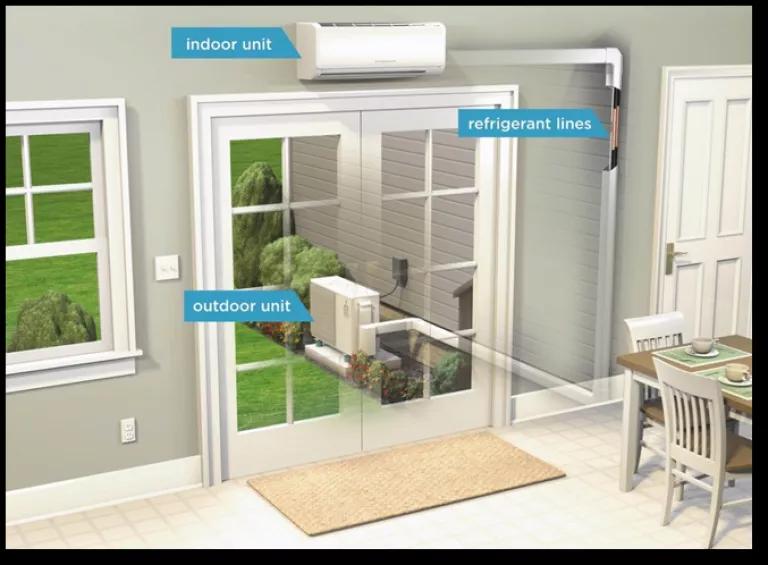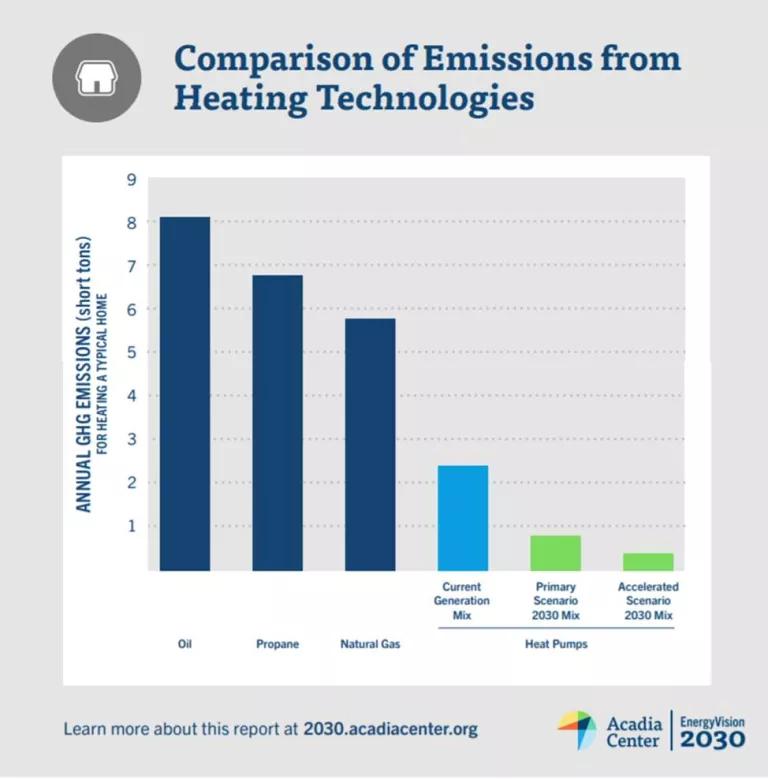
This blog is co-authored with Emily Levin, Vermont Energy Investment Corporation
Northeastern states are developing the market for super-efficient electric heat pumps to warm and cool homes and businesses, enabling a significant reduction in greenhouse gas (GHG) emissions from buildings in the region. A new report commissioned by NRDC shows heat pumps can provide a clean, efficient, and affordable option in a region where oil and propane furnaces are widespread.
Fossil fuels burned onsite account for about 30 percent of U.S. emissions from buildings, and this percentage is growing as states get more clean electricity from the wind and sun. Electric heat pumps enable buildings to transition away from using fossil fuels, and to tap into the growing supply of renewable electricity.
The report released today reviews the policies and programs in Northeast states—New England plus New York—to identify the key factors driving the success of nascent programs that encourage use of heat pump technology. Many of the lessons from the Northeast are relevant to developing the heat pump market in other regions as well. Key insights include the need to engage and train heat pump installers and distributors early-on, and finding ways to value both the electricity savings and the fossil fuel savings from switching to heat pumps.
Market development for heat pump technology is in the early stages and initiatives in the region are beginning to show results. This study, conducted by Vermont Energy Investment Corporation for NRDC, focuses on ductless heat pumps used for space heating, which represent the most common and rapidly growing heat pump technology in the Northeast. Many of the lessons learned and recommendations are also applicable to other heating technologies, such as ducted heat pumps and heat pump water heaters.

What the Heck Is a Heat Pump?
Heat pumps move energy to provide heating or cooling. For example, “air-source” heat pumps used for home heating absorb heat from the outside air (even when it is cold outside!) and move that heat inside the house to where it is needed. This is roughly 2 to 3 times more efficient than creating heat by burning fossil fuels like oil or natural gas. Heat pumps use the same technology as air-conditioners and refrigerators—but in reverse, as we have previously described.
When super-efficient heat pumps are powered by renewable electricity generated from the wind and sun, a massive reduction in GHG emissions from buildings is possible. This chart below from the Acadia Center compares the emissions from heating technologies in the Northeast. The light blue bar represents emissions from electric heat pumps with the current generation mix. These emissions go down as the renewable energy content of electricity goes up over time, represented by the green bars.

Early Lessons from the Northeast
With one of the cleanest electric grids in the country and widespread use of oil and propane for home heating, heat pumps provide a cleaner and cheaper alternative. States across the Northeast have developed different policies, programs and mechanisms to encourage efficient heat pump technology. The report reviews these policies, state by state.
Over 25,000 efficient air-source heat pumps have received incentives in the Northeast just in the last reported program year. Overall, the most successful programs combine two factors:
- Direct engagement with the installers and distributors of heat pumps so that the products are available and installers are primed to offer them to customers, and
- Significant incentives (at a least $500 cash incentive per unit) to get the attention of installers and distributors, and to encourage customers to choose them.
In addition, here are a few early lessons learned from the existing initiatives:
- Set concrete targets and dedicated funding. While all the Northeast states have policies that encourage building electrification, states that set binding targets for heat pump adoption and establish a dedicated funding source are having the most early success.
- Value all of the benefits. Switching to heat pumps has an energy efficiency benefit, but there are other important benefits like reduced GHG emissions as well. States like Rhode Island have found that it makes sense to value benefits such as GHG reduction and economic development when evaluating fuel switching from fossil fuels to electric heat pumps.
- Ramp up programs quickly with a targeted approach. Early market development requires starting where there are the fewest barriers to adoption. For example, in many regions it makes sense to target heat pumps to 1) Homeowners who currently heat with electric resistance, oil, or propane heaters; and 2) New construction and deep retrofits of buildings where heat pumps are installed in combination with other energy efficiency measures and solar generation systems, which reduces installation and operation costs.
- Provide contractor and customer training to encourage quality installation and efficient operation. Heat pump installation and how it’s used is key to delivering the desired energy and GHG impacts. Several recent evaluations from Connecticut, Massachusetts, and Rhode Island have found lower energy savings than anticipated because systems are not being optimally designed and operated. Training contractors to select the right heat pump technology for the space, size it correctly, and ensure quality installation are key. Customer training on heat pump controls is also critical to ensure energy savings.
More detail on these and other insights from the Northeast are available in the full report. These findings are important and timely as other regions such as California and the Pacific Northwest are considering ways to leverage this technology to save energy and reduce customer bills, air pollution, and GHG emissions.




